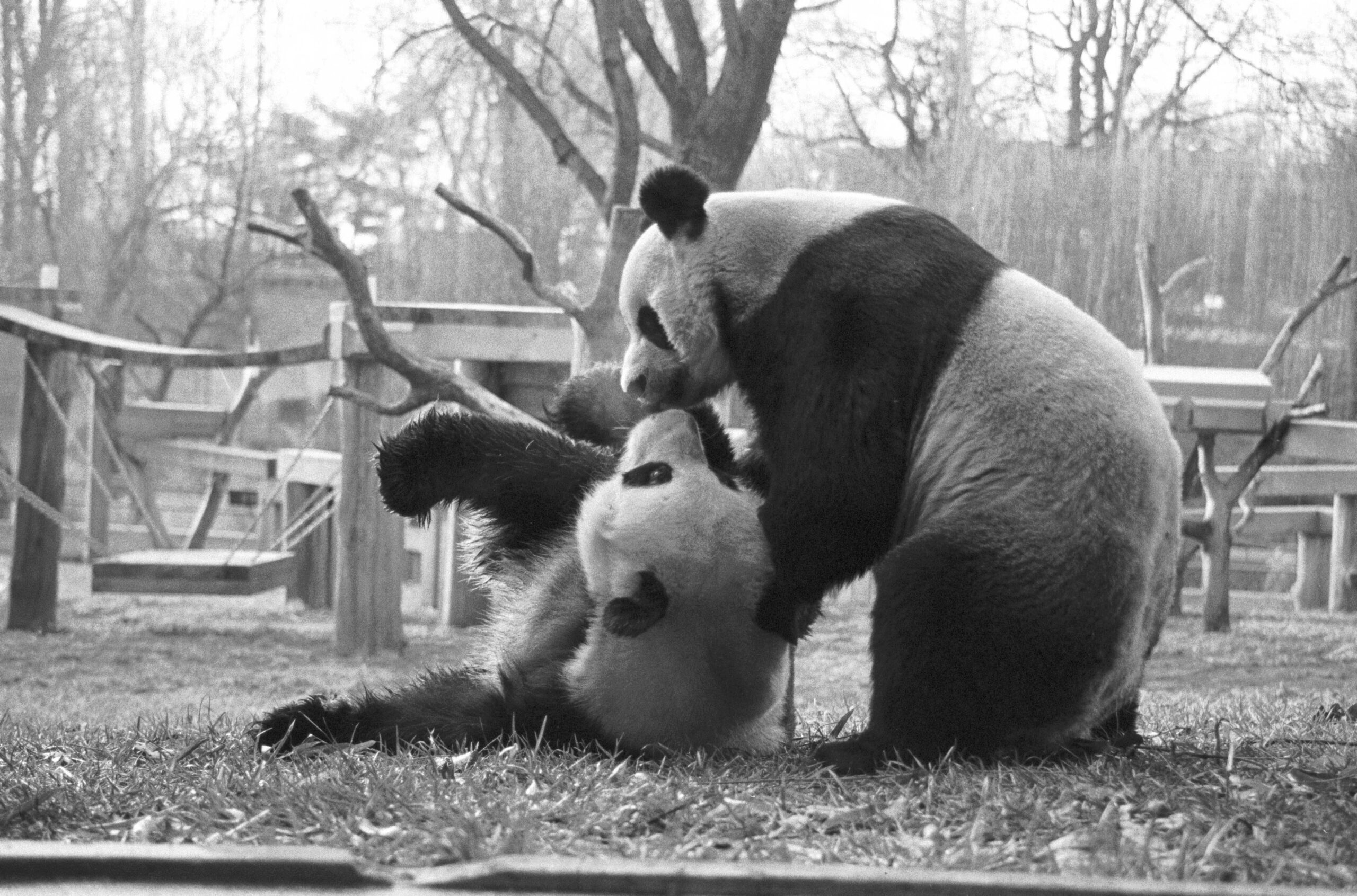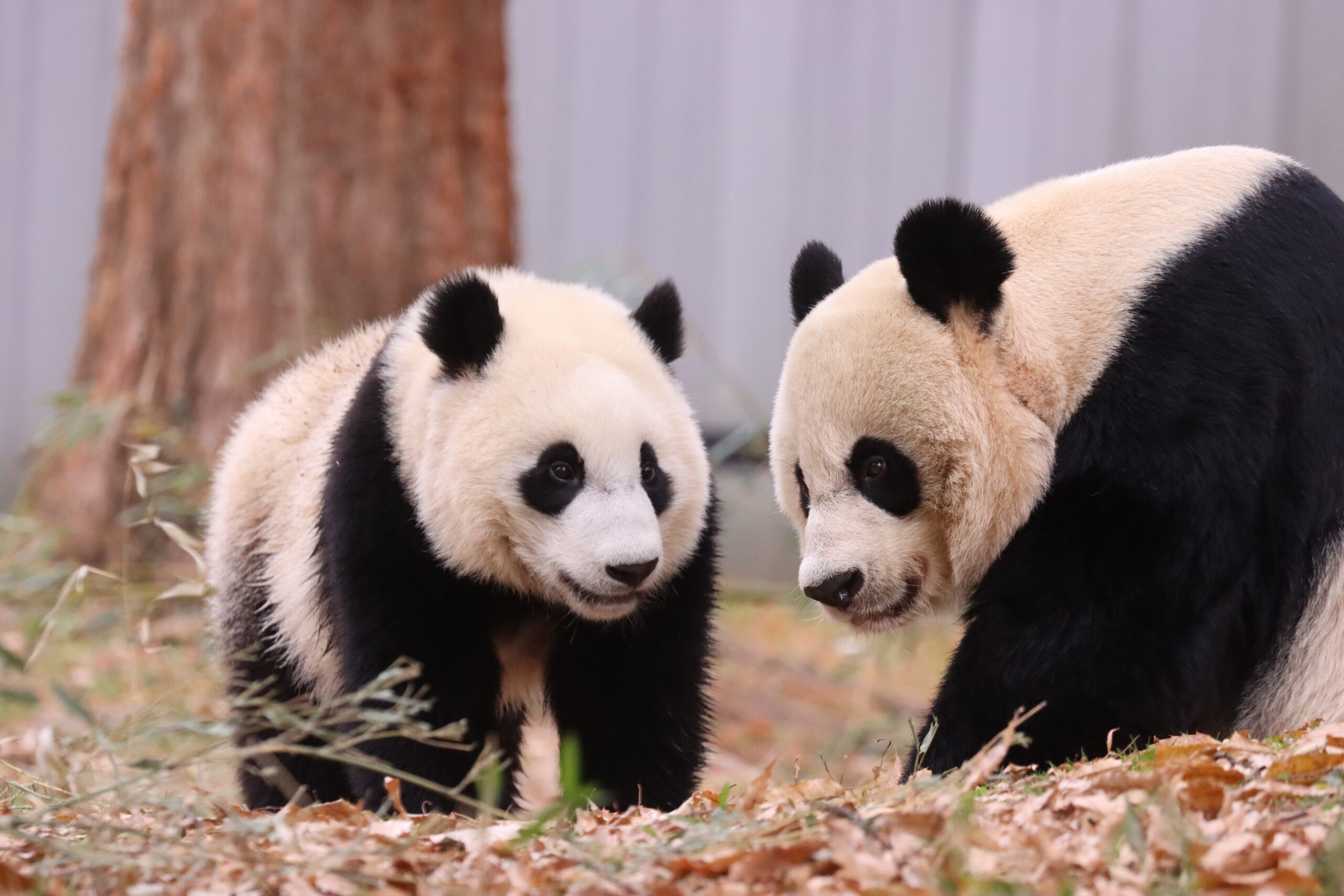Mei Xiang is Showing Signs of Estrus
Mei Xiang, the Zoo’s 18-year-old female giant panda, is showing behavioral and physical signs of estrus. She has been increasingly restless lately and has been calling to the Zoo’s resident male, Tian Tian, who has also spent a lot of time lately looking for Mei Xiang and calling for her. Mei Xiang has been pacing and has also been sloshing about in a pool of water in her enclosure—typical of both males and females ready to breed. Aside from behavioral changes, scientists have also noticed that Mei Xiang’s external genital area is swollen and pink—another indicator of estrus. Her urine samples, collected daily, also show a rise in her estrogen levels which indicates she is close to ovulation.
Panda breeding can often feel like a race against time, as female giant pandas are able to conceive for barely 36 hours each year in the spring. In that brief window, panda staff hope to give Mei Xiang and Tian Tian an opportunity to breed naturally. “The pandas haven’t successfully bred in the past, but we still give them the opportunity,” says Laurie Thompson, assistant curator of giant pandas. Scientists also plan to artificially inseminate Mei Xiang with Tian Tian’s semen.
Then, it’s several months of waiting to determine if she becomes pregnant. Because giant panda fetuses are tiny and only develop toward the end of gestation, they aren’t detected in an ultrasound until a week or so before they’re born. In addition, pandas, like several other species, can undergo pseudo or false pregnancies, where they do everything they would if they were pregnant—sleeping and resting more as well as building a nest of bamboo in preparation for a cub. At the end of a pseudopregnancy, however, hormone levels return to baseline and females’ energy levels and behavior return to normal.
Although Mei Xiang has experienced several pseudopregnancies in the past, she has also produced three surviving cubs—Tai Shan, born in July of 2005; Bao Bao, born in August of 2013; and Bei Bei, born in August of 2015. Because Mei Xiang went into estrus a little later than usual this year, albeit still within the typical March to May timeframe, if she were to become pregnant, her offspring would most likely be born around the end of September.
Zoo staff are currently preparing for the arrival of their panda colleagues from China, who will assist the Zoo’s reproductive scientists with the artificial insemination process.
Source: Smithsonian’s National Zoo & Conservation Biology Institute










